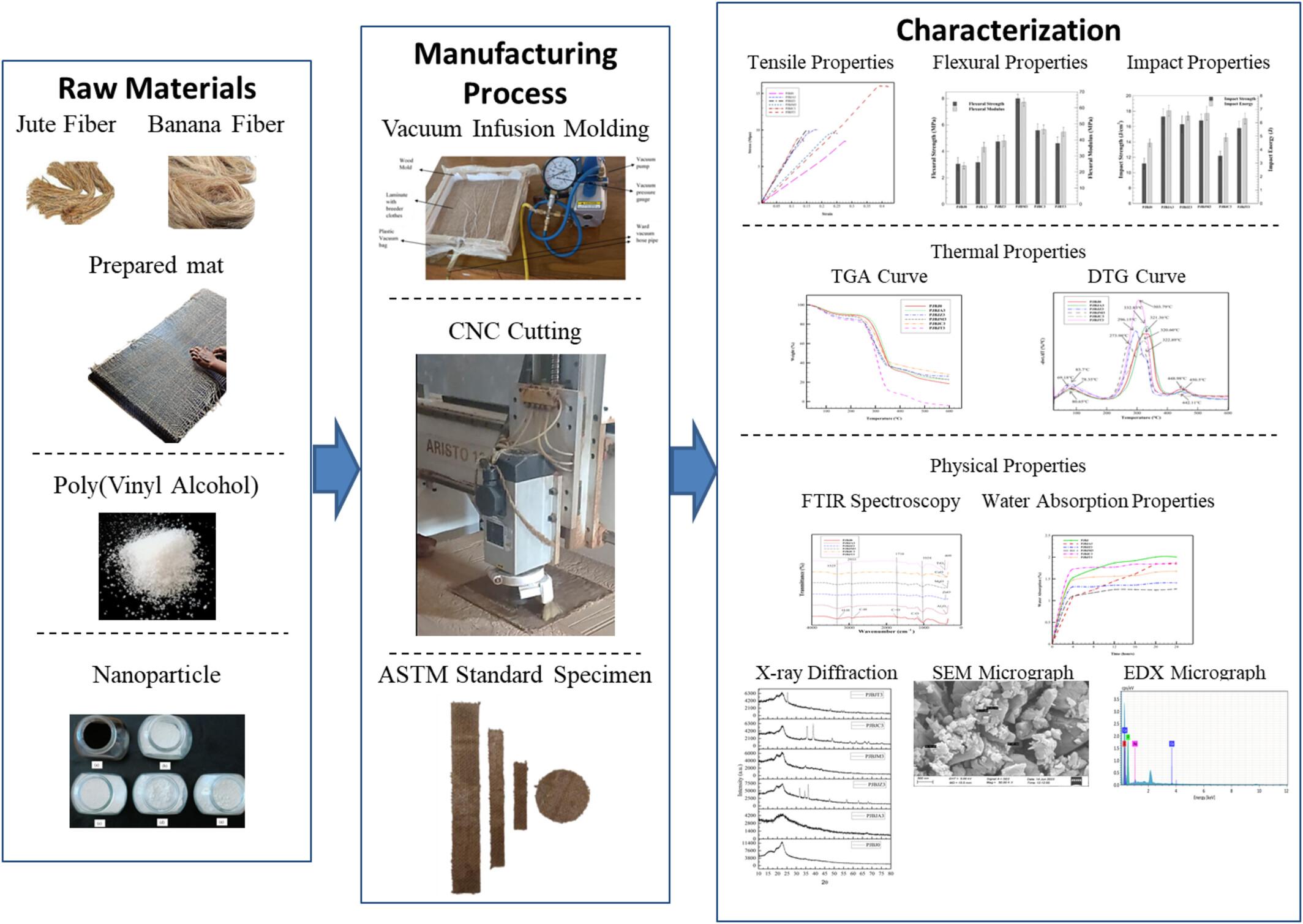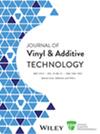An experimental study on jute/banana fiber reinforced poly(vinyl alcohol) composites with nanofiller
Abstract
The incorporation of nanoparticles into natural fiber composites has the potential to alter the characteristics of natural fiber composites. In this study, various properties of jute and banana fiber reinforced poly(vinyl alcohol) (PVA) composites with different nanofillers incorporation were investigated. Samples were prepared using the vacuum bagging technique. Inorganic nanoparticles (Al2O3, ZnO, MgO, CuO, and TiO2) were synthesized using a ball milling machine and in each sample, 3 wt.% of nanofillers were incorporated. The maximum ultimate tensile strength and elongation percentage is found for TiO2, which is 90.433% higher than pure PVA whereas MgO incorporated samples provides maximum flexural strength, which is 162.59% higher than PVA. The sample with Al2O3 provides strongest impact resistance, 17.3 J/cm2. It was found that the decomposition temperatures were slightly higher for MgO and CuO doping than the undoped PVA composite. The FT-IR spectra exhibited notable hydroxyl groups and minor shifts indicating a reduction in hydrophilicity upon the introduction of nanoparticles. The water absorption exhibited a reduction of up to 36% in conjunction with an increase in density across all samples. The highest crystallinity is found for CuO nanofiller composite, validated by x-ray diffraction analysis. Additionally, morphological changes in the composites were seen through scanning electron microscopy and EDX shows a strong peak at 2.1 keV indicate some impurities present in the samples.
Highlights
- Jute/banana/PVA composites were prepared with 3 wt% nanoparticles incorporation.
- Metal oxides such as Al2O3, ZnO, MgO, CuO, and TiO2 were used as nanoparticle.
- The use of nanoparticle improved the tensile, flexural, and impact properties.
- Decomposition temperatures were found higher for MgO and CuO incorporated composites.
- Upon nanoparticle incorporation, water absorption exhibited a reduction of upto 36%.



 求助内容:
求助内容: 应助结果提醒方式:
应助结果提醒方式:


